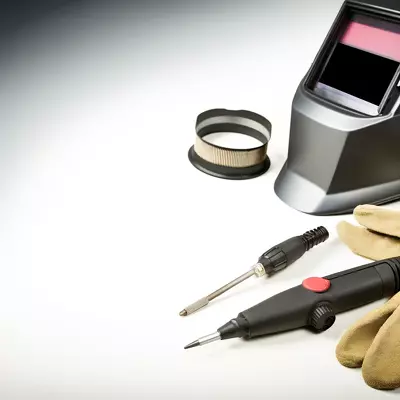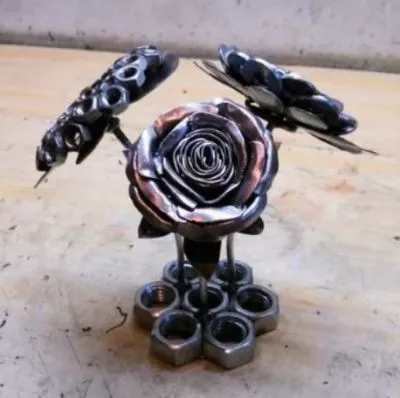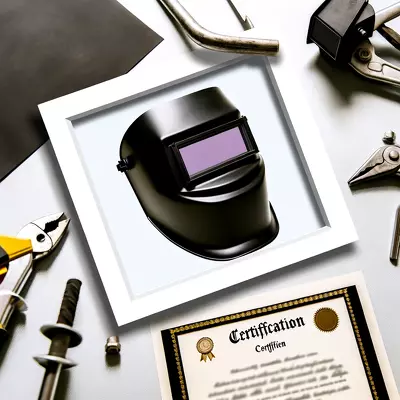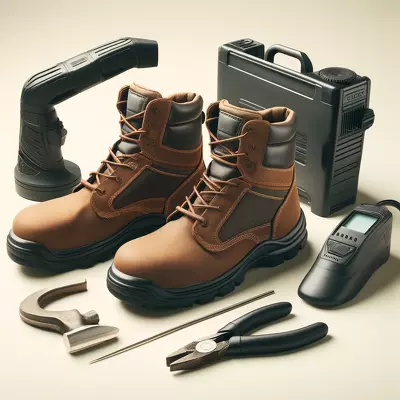Mastering Welding Terminology: Your Ultimate Guide to Welding Terms and Definitions
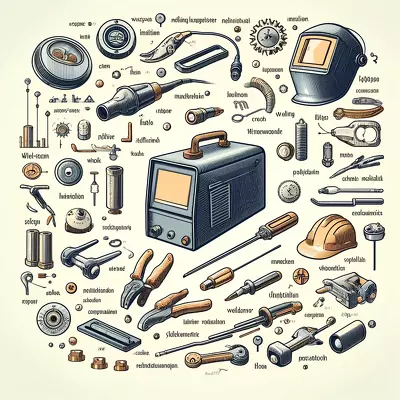
Understanding welding terms and definitions is crucial for anyone involved in the welding industry. Whether you are a beginner or a seasoned professional, knowing the correct terminology ensures clear communication and efficient work. This article will help you navigate the most common welding terms, making it easier to understand instructions, read technical documents, and discuss projects with colleagues. Let’s explore the key terms that every welder should know.
I. Introduction
A. Importance of Understanding Welding Terminology
Understanding welding terminology is essential for anyone involved in welding, whether as a hobby or a profession. Clear communication and accurate descriptions are crucial to ensure safety and efficiency. Knowing the correct terms helps prevent misunderstandings and mistakes that could lead to costly errors or accidents.
B. Benefits of Knowing Key Welding Definitions
Knowing key welding definitions allows for better comprehension of technical documents, blueprints, and instructions. This knowledge enhances the ability to discuss projects with colleagues and supervisors, leading to improved collaboration and productivity. Additionally, it ensures compliance with industry standards and quality control measures.
II. Basic Welding Terms
A. Welding
Welding is the process of joining two or more pieces of metal or thermoplastics by heating them to their melting point, causing them to fuse together. This technique is fundamental in construction, manufacturing, and repairs.
B. Weld Pool
The weld pool is the molten metal formed during the welding process. It is crucial for creating a strong bond between the materials being joined. The size and stability of the weld pool affect the quality of the weld.
C. Heat-Affected Zone
The heat-affected zone (HAZ) is the area of the base material that has not melted but has experienced a change in its properties due to the heat of welding. The HAZ can impact the strength and durability of the weld.
D. Fusion
Fusion refers to the melting and mixing of base and filler materials during welding. Proper fusion ensures a strong, cohesive weld, while poor fusion can lead to weak joints and potential failures.
III. Types of Welds
A. Butt Weld
A butt weld is created when two pieces of metal are joined along a single plane. This type of weld is common in pipelines and structural applications due to its strength and reliability.
B. Fillet Weld
A fillet weld joins two surfaces at a right angle. It is typically used in lap, tee, and corner joints. This type of weld is versatile and widely used in construction and manufacturing.
C. Groove Weld
Groove welds are made by depositing weld metal in a groove between two pieces of metal. These welds are used when the joint requires deeper penetration for added strength.
D. Corner Weld
Corner welds are used to join two pieces of metal at a 90-degree angle, forming an L-shaped joint. They are common in frame construction and fabrication projects.
IV. Welding Processes
A. Arc Welding
Arc welding is a broad category of welding that uses an electric arc to melt the base and filler materials. This process is versatile and can be used on various metals and thicknesses. There are several types of arc welding, each suited for different applications.
B. MIG Welding
Metal Inert Gas (MIG) welding uses a continuous wire feed as an electrode and an inert gas to shield the weld pool from contamination. It is known for its ease of use and speed, making it ideal for beginners and large projects.
C. TIG Welding
Tungsten Inert Gas (TIG) welding employs a tungsten electrode and an inert gas shield. It is highly precise and produces high-quality welds, making it suitable for critical applications.
D. Stick Welding (SMAW)
Stick welding, also known as Shielded Metal Arc Welding (SMAW), is a specific type of arc welding. This manual welding process uses a consumable electrode coated in flux. The flux coating provides a shielding gas and slag to protect the weld pool. Stick welding is versatile and effective for welding thicker materials and in outdoor environments. It is also referred to as Manual Metal Arc Welding (MMA or MMAW) and Flux Shielded Arc Welding.
E. Flux-Cored Arc Welding (FCAW)
Flux-Cored Arc Welding (FCAW) is similar to MIG welding but uses a special tubular wire filled with flux. The flux helps protect the weld pool from contamination, eliminating the need for an external shielding gas. FCAW is suitable for welding thick materials and can be used in various positions, making it a versatile and efficient process for many applications.
V. Welding Positions
A. Flat Position (1G)
The flat position, also known as 1G, is the easiest and most common welding position. In this position, the workpiece is placed flat, and the welder works from above, allowing gravity to assist with the weld pool.
B. Horizontal Position (2G)
In the horizontal position, or 2G, the workpiece is placed horizontally, and the weld is made along a vertical plane. This position requires skill to control the weld pool and avoid sagging.
C. Vertical Position (3G)
Vertical welding, or 3G, involves welding in an upward or downward direction along a vertical surface. It is challenging and requires precise control of the weld pool and heat input.
D. Overhead Position (4G)
Overhead welding, known as 4G, is performed from below the workpiece, with the weld pool above the welder. This position is difficult due to the effects of gravity and requires advanced skills and techniques.
E. Pipe Welding Positions
- 5G Position
The 5G position involves welding a horizontally fixed pipe. The welder must move around the pipe, welding in flat, vertical, and overhead positions. This position requires proficiency in multiple welding techniques. - 6G Position
The 6G position is considered the most challenging. It involves welding a pipe fixed at a 45-degree angle. The welder must weld in various positions, including overhead, vertical, and horizontal, making it a true test of welding skill and versatility.
VI. Welding Equipment and Tools
A. Welding Machine
A welding machine, or welder, provides the necessary power for creating the electric arc. Different machines are suited for various welding processes, such as MIG, TIG, and stick welding.
B. Electrodes (Welding Rods)
Electrodes, also known as welding rods, are conductive materials used to create the electric arc and melt the base materials. They can be consumable, as in stick welding, where the electrode melts and becomes part of the weld, or non-consumable, as in TIG welding, where the electrode does not melt and serves only to conduct the arc.
C. Shielding Gas
Shielding gas protects the weld pool from atmospheric contamination. Common gases include argon, carbon dioxide, and helium, each suited for different welding processes and materials.
D. Safety Gear
Safety gear, such as helmets, gloves, protective clothing, and respirators, is essential for protecting welders from hazards such as UV radiation, sparks, and fumes.
VII. Advanced Welding Terms
A. Penetration
Penetration refers to the depth to which the weld metal fuses with the base material. Adequate penetration is crucial for strong, reliable welds.
B. Porosity
Porosity is the presence of gas pockets or voids within the weld metal. It weakens the weld and can lead to failures. Proper shielding gas and technique help minimize porosity.
C. Spatter
Spatter consists of small droplets of molten metal expelled from the weld pool. It can adhere to the workpiece and surrounding area, creating a messy finish and potential defects.
D. Undercut
Undercut is a groove formed at the weld toe, where the base material has been melted away but not filled with weld metal. It can compromise the strength of the weld.
E. Warping
Warping occurs when the heat from welding causes the metal to deform or bend. This distortion happens because different parts of the metal expand and contract at different rates during the heating and cooling process. Warping can lead to misaligned components, affecting the overall fit and function of the welded assembly.
VIII. Welding Defects and Their Causes
A. Cracks
Cracks are fractures that occur in the weld or base material due to excessive stress, poor technique, or unsuitable materials. They can significantly weaken the weld.
B. Incomplete Fusion
Incomplete fusion happens when the weld metal does not fully fuse with the base material or previous weld pass. This defect can lead to weak joints and potential failures.
C. Distortion
Distortion occurs when the heat from welding causes the workpiece to warp or bend. Controlling heat input and using proper techniques can help prevent distortion.
D. Overlap
Overlap is the excessive deposition of weld metal that rolls over the base material without proper fusion. It can create weak points and reduce the overall strength of the weld.
IX. Industry Standards and Certifications
A. American Welding Society (AWS) Standards
The American Welding Society (AWS) sets industry standards for welding processes, materials, and safety. AWS certifications are recognized globally and ensure welders meet high-quality standards.
B. ISO Certification
ISO certification provides international standards for welding quality and processes. It ensures consistency and reliability in welding practices across different industries and regions.
C. Welder Qualification Tests
Welder qualification tests assess a welder’s ability to produce sound welds under specified conditions. These tests are essential for verifying skills and ensuring compliance with industry standards.
X. FAQs
Q: What is the most common welding process for beginners?
A: MIG welding is often recommended for beginners due to its ease of use and quick learning curve.
Q: How can I prevent porosity in my welds?
A: Ensuring proper shielding gas coverage and using clean materials can help prevent porosity.
Q: What causes weld spatter, and how can it be reduced?
A: Weld spatter is caused by droplets of molten metal. Reducing spatter involves adjusting welding parameters and maintaining a steady hand.
Q: Why is penetration important in welding?
A: Proper penetration ensures a strong bond between the weld metal and the base material, resulting in a durable weld.
Q: What are the key differences between MIG and TIG welding?
A: MIG welding uses a continuous wire feed and is faster, while TIG welding uses a tungsten electrode and is more precise.
Q: What safety gear is essential for welding?
A: Essential safety gear includes a welding helmet, gloves, protective clothing, and a respirator to protect against fumes and UV radiation.
Q: How do I become a certified welder?
A: To become a certified welder, one must pass welder qualification tests that assess their ability to produce quality welds under specified conditions.
XI. Conclusion
A. Recap of Key Points
Understanding welding terms and definitions is vital for effective communication, quality work, and safety in the welding industry. Familiarity with basic and advanced terms, types of welds, processes, positions, and common defects helps welders perform their tasks proficiently.
B. Importance of Continuous Learning in Welding
The welding industry is constantly evolving with new technologies and techniques. Continuous learning and staying updated with the latest developments are crucial for maintaining skills and ensuring high-quality work.
XII. Suggested Readings
For those interested in expanding their knowledge of welding, the following books provide valuable insights and detailed information:
- “Welding For Dummies” by Steven Robert Farnsworth – This book is an excellent resource for beginners, offering step-by-step instructions and practical tips.
- “The Welding Bible” by William L. Gallery – A comprehensive guide covering various welding processes, techniques, and safety measures.
- “Welding Essentials: Questions & Answers” by William L. Galvery and Frank M. Marlow – A handy reference that answers common welding questions and provides detailed explanations.
- “Modern Welding” by Andrew D. Althouse, Carl H. Turnquist, and William A. Bowditch – This textbook offers in-depth coverage of welding principles, techniques, and equipment.
- “Welding: Principles and Applications” by Larry Jeffus – A widely used textbook that provides a thorough understanding of welding processes and applications.
These books offer a range of information suitable for beginners and experienced welders alike. Continuous reading and education are key to mastering welding techniques and staying updated with industry advancements.

